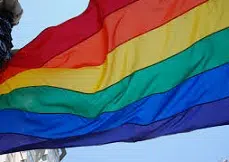 The acronym LGBT is formed from the initial letters of the terms lesbian , gay , bisexual and transsexual . In any case, the usual use of the concept aims to include all individuals with gender identities and sexual orientations that go beyond the female/male binary .
The acronym LGBT is formed from the initial letters of the terms lesbian , gay , bisexual and transsexual . In any case, the usual use of the concept aims to include all individuals with gender identities and sexual orientations that go beyond the female/male binary .
Long ago, those who were not strictly heterosexual were considered homosexual , without further clarification or distinction. As the years went by, people began to understand that this terminology was not enough to refer to the multiple nuances of reality and thus the idea of LGBT emerged.
Greater awareness, however, allowed us to continue moving forward and take other steps. Today we can find acronyms such as LGBTA , LGBTP and LGBTI , among others, which allow us to name those who perceive themselves as asexual , pansexual or intersexual , for example .
As we said above, LGBT is also usually understood as gender diversity in its broadest sense , and not just focusing on the four categories or definitions mentioned in the acronym .
There are more and more movements fighting to defend the rights of the LGBT community . Historically, its members have suffered discrimination, persecution and attacks of all kinds, a reality that, little by little, has been changing in recent years, although not completely. That is why unrestricted respect for those who are part of the LGBT community is important and it is also important for heterosexuals to show solidarity so that attacks and disrespect towards people do not continue to be repeated simply for not having a particular sexual orientation .
 Being part of the LGBT community is not a decision, it is not done because of fashion or because of an ideological issue, but rather it is something that we discover during our development as we get to know ourselves better. Each person understands their own sexuality at different times in their growth: there are those who do so before the age of ten and others who must live a couple of decades longer to reach the same point. But sexual identity does not imply a change in lifestyle, but in any case a name for what already existed .
Being part of the LGBT community is not a decision, it is not done because of fashion or because of an ideological issue, but rather it is something that we discover during our development as we get to know ourselves better. Each person understands their own sexuality at different times in their growth: there are those who do so before the age of ten and others who must live a couple of decades longer to reach the same point. But sexual identity does not imply a change in lifestyle, but in any case a name for what already existed .
Although society has taken important steps towards acceptance of the LGBT community, there is still a lot of work ahead. What have we achieved so far? In some countries - or, rather, in some cities - it is no longer difficult to talk about one's sexuality with friends, family and co-workers, nor is it difficult to go out with a same-sex partner and express affection through gestures and petting. However, there is an invisible barrier that separates people based on their sexuality , just as there are others that group us together based on religious, economic and ideological issues.
Cinema is an excellent reference point to measure the degree of inclusion of different parts of society. Well, the LGBT community is still very far from being reflected in a significant percentage of the films that are published each year. It all started with "the protagonist's homosexual friend", who generally seemed extremely effeminate, something that is not entirely inclusive for those who do not behave this way. Little by little, lesbians and transsexuals also appeared, although with a much less apparent presence, much more silent and hidden.
Today there are films and series that are less afraid to include LGBT characters among their protagonists, but heterosexuality always reigns as the undisputed norm , and that hurts the sensibilities of millions of people whose voices have not yet been heard.
